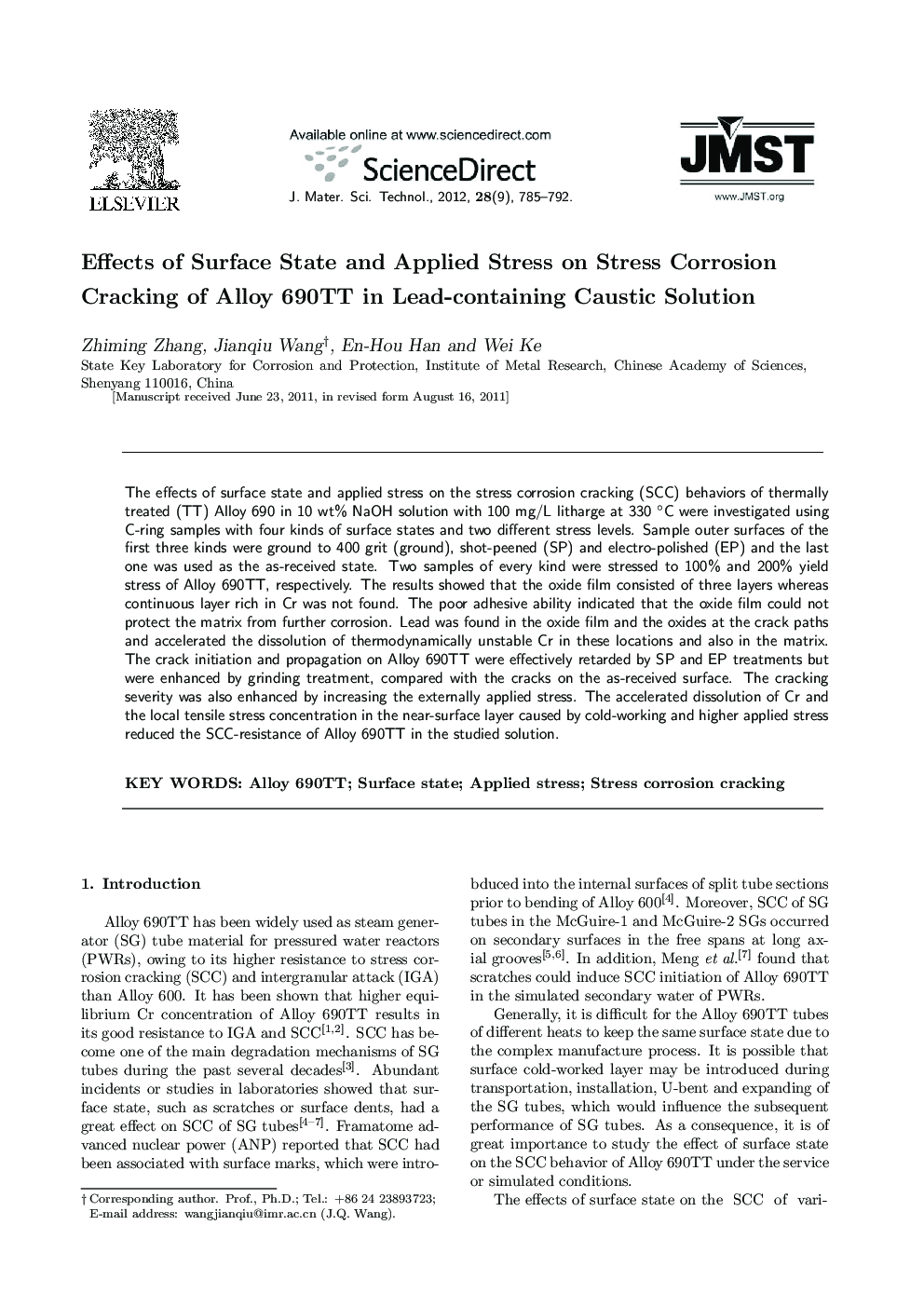| کد مقاله | کد نشریه | سال انتشار | مقاله انگلیسی | نسخه تمام متن |
|---|---|---|---|---|
| 1556960 | 999220 | 2012 | 8 صفحه PDF | دانلود رایگان |
عنوان انگلیسی مقاله ISI
Effects of Surface State and Applied Stress on Stress Corrosion Cracking of Alloy 690TT in Lead-containing Caustic Solution
دانلود مقاله + سفارش ترجمه
دانلود مقاله ISI انگلیسی
رایگان برای ایرانیان
کلمات کلیدی
موضوعات مرتبط
مهندسی و علوم پایه
مهندسی مواد
شیمی مواد
پیش نمایش صفحه اول مقاله

چکیده انگلیسی
The effects of surface state and applied stress on the stress corrosion cracking (SCC) behaviors of thermally treated (TT) Alloy 690 in 10 wt% NaOH solution with 100 mg/L litharge at 330 °C were investigated using C-ring samples with four kinds of surface states and two different stress levels. Sample outer surfaces of the first three kinds were ground to 400 grit (ground), shot-peened (SP) and electro-polished (EP) and the last one was used as the as-received state. Two samples of every kind were stressed to 100% and 200% yield stress of Alloy 690TT, respectively. The results showed that the oxide film consisted of three layers whereas continuous layer rich in Cr was not found. The poor adhesive ability indicated that the oxide film could not protect the matrix from further corrosion. Lead was found in the oxide film and the oxides at the crack paths and accelerated the dissolution of thermodynamically unstable Cr in these locations and also in the matrix. The crack initiation and propagation on Alloy 690TT were effectively retarded by SP and EP treatments but were enhanced by grinding treatment, compared with the cracks on the as-received surface. The cracking severity was also enhanced by increasing the externally applied stress. The accelerated dissolution of Cr and the local tensile stress concentration in the near-surface layer caused by cold-working and higher applied stress reduced the SCC-resistance of Alloy 690TT in the studied solution.
ناشر
Database: Elsevier - ScienceDirect (ساینس دایرکت)
Journal: Journal of Materials Science & Technology - Volume 28, Issue 9, September 2012, Pages 785-792
Journal: Journal of Materials Science & Technology - Volume 28, Issue 9, September 2012, Pages 785-792
نویسندگان
Zhiming Zhang, Jianqiu Wang, En-Hou Han, Wei Ke,